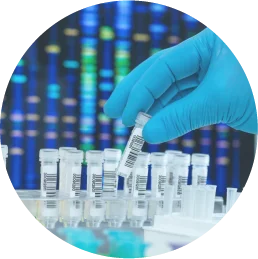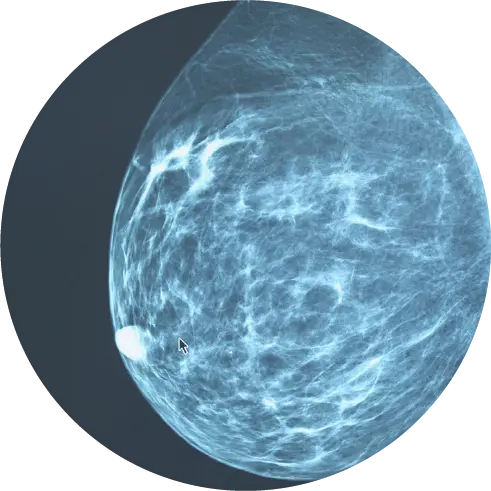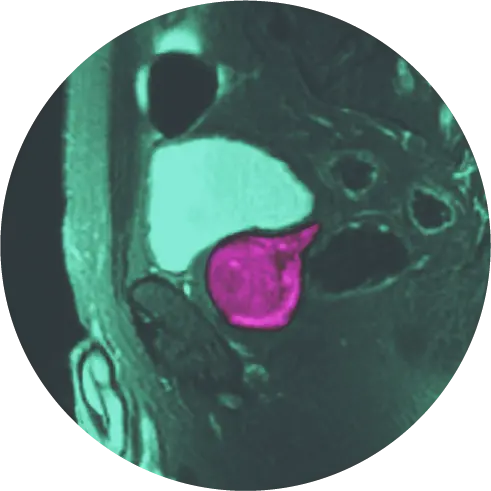Focal therapy has emerged as a leading prostate cancer treatment option by effectively treating the disease while minimizing side-effects. HALO Precision Diagnostics™ pioneered laser focal therapy, a non-invasive MRI-guided therapy proven to effectively treat prostate cancer tumors while protecting healthy tissue. Historically, a radical prostatectomy is the most commonly recommended treatment for prostate cancer. This invasive procedure carries a 50% risk of erectile dysfunction (ED) and a 25% risk of incontinence.1 HALO’s laser focal therapy results in ≤1% ED and incontinence, as shown in clinical trial studies with 12-year follow up data.2
Although most men do not die from prostate cancer, it is still only second to lung cancer in deaths in men from all cancers.3 Early screening, especially for men who are at higher risk (Black men, men over the age of 65, and men who have a family history), can detect prostate cancer before it spreads. Fortunately, the more we learn and study prostate cancer, the better our understanding of how effective specific treatments are and how the side effects of any particular therapy impact a man’s well-being.
Treatment Decisions and Options for Prostate Cancer
Deciding which option is right for treating prostate cancer can be a complicated process, but choosing the right one is important due to possible side effects and the success of each therapy. In a perfect world, you effectively treat your prostate cancer while enduring minimal to no side effects.
Focal therapy has revolutionized the treatment landscape for some types of prostate cancer. If you have not heard of focal therapy or want to learn more, we will cover who it is for, its advantages, and the overall outcomes of the treatment.
Each person’s situation is unique when it comes to prostate cancer. Sometimes prostate cancer grows slowly, and other times it is aggressive, so treatment plans are individualized depending on several factors:
- The Stage – The stage of prostate cancer determines how far the cancer has progressed. Prostate cancer stages are 1 through 4.4
- Age – Your age could determine whether you decide on treatment or active surveillance.5
- Medical Conditions and Side Effects – Some treatments for prostate cancer have significant side effects, including erectile dysfunction, incontinence, infertility, fatigue, diarrhea, nausea, and vomiting.
Treatment decisions are based on whether the prostate cancer is localized (when the cancer cells are confined to the prostate) or advanced (when it has spread to lymph nodes or bones).6 In general, these are the treatment options for prostate cancer:
- Active surveillance
- Surgery
- Radiation therapy
- Chemotherapy
- Immunotherapy
- Hormonal therapy
- Bone-modifying drugs
- Focal therapy
What Is Focal Therapy for Prostate Cancer?
The goal of focal therapy is to treat only the area with the most aggressive tumor, leaving surrounding structures alone. Why does this matter? Other prostate cancer treatments and their subsequent side effects disrupt those structures that control bladder and bowel continence and sexual function. Focal therapy preserves bladder and sexual functions while still treating the cancer effectively.
Laser focal therapy (focal laser ablation) is used to treat low-to-intermediate prostate cancer. It can also be used to help improve the symptoms associated with benign prostatic hyperplasia (BPH).7
This procedure involves placing the patient inside an MRI machine and displaying images and thermal maps on a computer screen. A thin laser fiber is guided to the tumor, and laser energy is applied to ablate, or kill, cancer cells.
The temperature and the extent of the ablation area are constantly monitored with MRI imaging, allowing clinicians to determine if all visible tumors have been destroyed. Performing laser ablation simultaneously with an MRI allows for precise targeting and real-time results visibility.
Advantages of Laser Focal Therapy
The advantages of laser focal therapy are plentiful for patients who qualify. Focal treatment of malignancies has been successfully implemented in breast, thyroid, lung, colon, and kidney cancers, with oncologic outcomes comparable with radical surgical resection.8
Minimally Invasive – Focal therapy is an ambulatory outpatient procedure that usually lasts roughly 4 hours.
Rapid Recovery – Most patients can return to work the next day.
No Anesthesia – No general anesthesia is required, so focal therapy eliminates any potential side effects from anesthesia.
Improved Urination – Most men have improved urination after the procedure.
Fewer Risks of Side Effects – There is a lower risk of side effects such as incontinence, erectile dysfunction, impotence, and bowel control problems.
Improved Accuracy – Focal therapy offers better accuracy in locating and treating prostate cancer.
Who Should Consider Focal Therapy for Prostate Cancer?
When focal therapy for prostate cancer was first introduced, it was used as an alternative to active surveillance in very low-risk patients. Since then, its use has expanded to include those with favorable intermediate-risk disease, as defined by the National Comprehensive Cancer Conference (NCCN) guidelines.9
The best candidates for focal therapy, according to the Cleveland Clinic, have a prostate gland about 40cc in size (or a tumor in the lower half of a larger gland), a single tumor visible on an MRI, and the absence of cancer elsewhere in the gland (as proven by biopsies).10 Talk with your doctor about opting for focal therapy given your specific circumstances.
How Effective Is Focal Therapy for Prostate Cancer?
HALO Diagnostics released interim 10-year results from its Phase II 20-year clinical trial for prostate laser focal therapy in patients with localized prostate cancer. Over 170 men who were 45 years of age or older and diagnosed with low-to-intermediate risk of recurrent prostate cancer volunteered to participate in the study.
The results are impressive: Less than 1% risk of infection, erectile dysfunction, and incontinence, whereas a conventional whole-gland prostatectomy carries a risk of up to 50% for erectile dysfunction and 25% for urinary incontinence. These results, along with a 100% prostate-cancer-specific survival rate, are an encouraging development for men looking for a prostate cancer therapy option with a lower risk of side effects.
Prostate cancer recurrence is a risk with any treatment procedure. With focal therapy, recurrence can happen, but you can repeat the procedure or choose one of the other treatment options.
In addition to laser focal therapy, HALO physicians also offer Transurethral Ultrasound Ablation (TULSA-PRO), cryotherapy, and High Intensity Focused Ultrasound (HIFU) as additional treatments for prostate cancer.
There is little doubt that focal therapy is the future of prostate cancer treatment for many patients. Continued research in this area will support the use of focal therapy as a less invasive treatment with a lower side effect profile, thereby improving outcomes and quality of life. HALO provides precision therapeutics to treat the right disease, at the right time, with the right technology in a low-cost, convenient outpatient environment. To learn more, contact our team of prostate care professionals today by filling out the form below or by giving us a call at 877-225-2831.
References
1 https://www.ncbi.nlm.nih.gov/pmc/articles/PMC1477599/
2 https://www.auajournals.org/doi/pdf/10.1097/JU.0000000000000860
3 https://www.cancer.org/cancer/prostate-cancer/about/key-statistics.html
4 https://www.cancercenter.com/cancer-types/prostate-cancer/stages
5 https://www.cancer.org/cancer/prostate-cancer/treating/watchful-waiting.html
6 https://www.cancer.net/cancer-types/prostate-cancer/types-treatment
9 https://www.nccn.org/guidelines/guidelines-detail?category=1&id=1459
10 https://my.clevelandclinic.org/health/treatments/16265-prostate-cancer-focal-therapy




